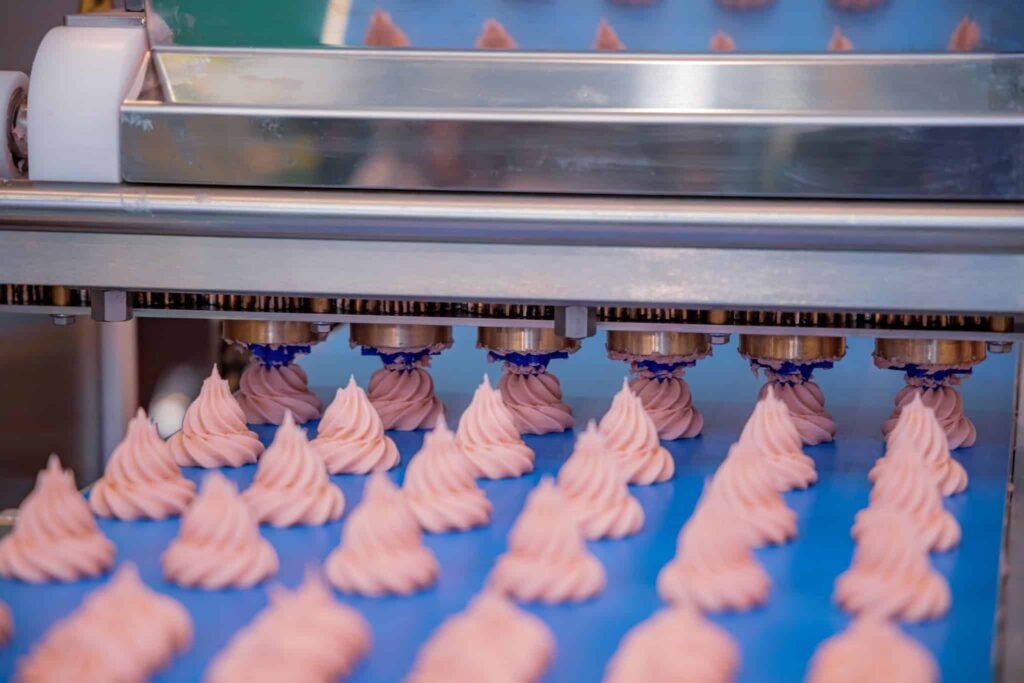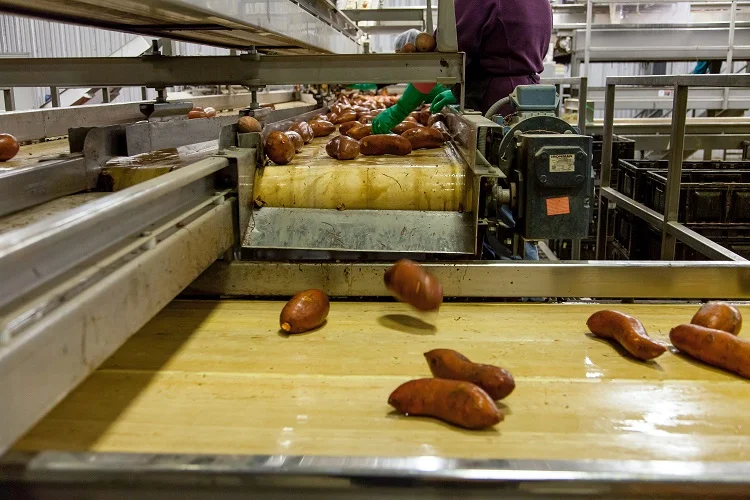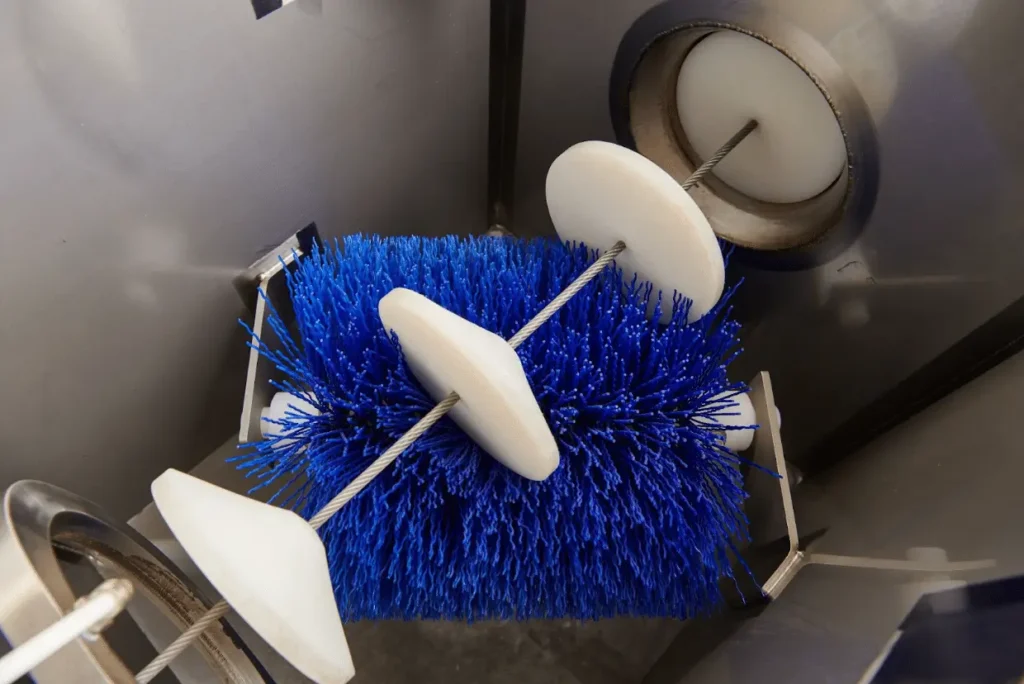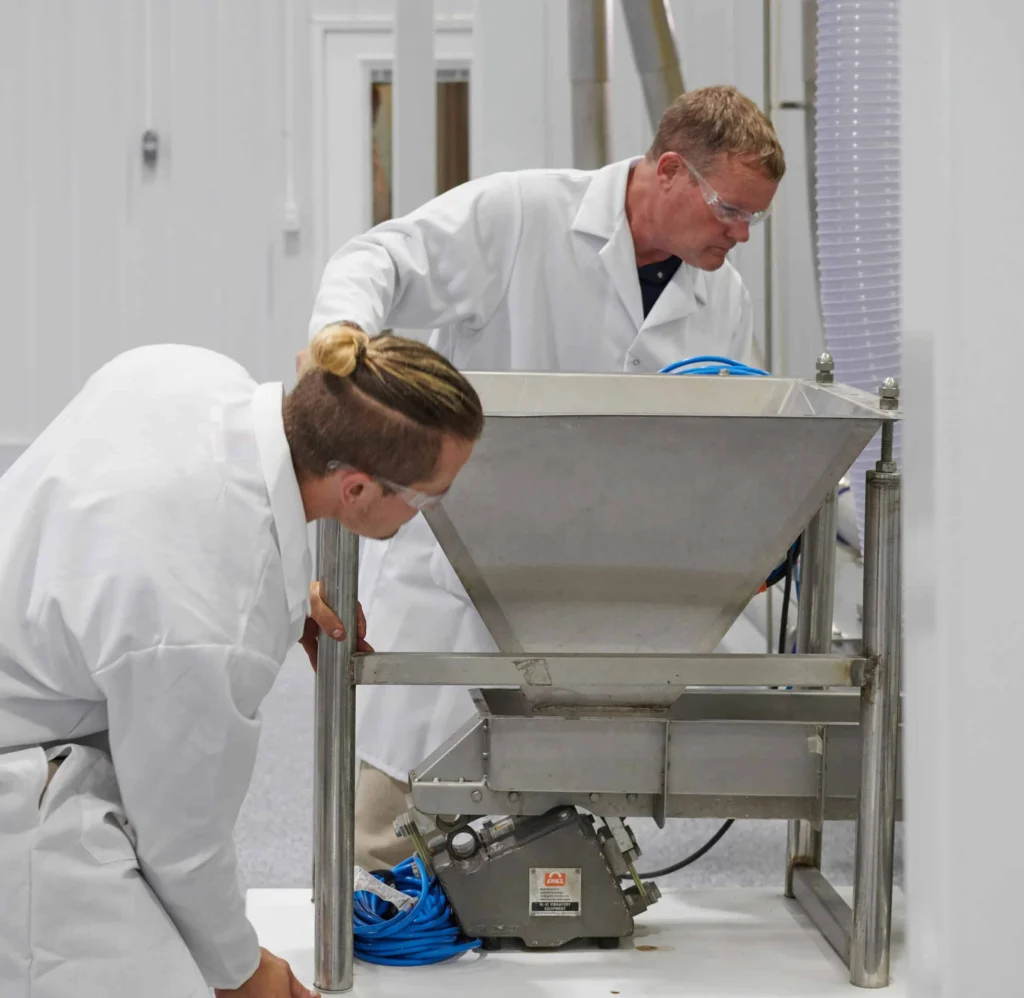When it comes to maintaining optimal efficiency and cleanliness in industrial operations, understanding the diverse range of options available is crucial. So, what cleaning options exist for conveyor systems? From manual cleaning techniques to automated solutions, let’s explore the various options and strategies that can help you keep your systems running smoothly.
Cleaning Conveyor Belts and Other Conveyor Technologies Are Essential for Keeping Your Facility up and Running
Most people are unaware of the importance of keeping a conveyor system clean, especially in the food processing industry. A dirty or dusty conveyor belt system increases the risk of contamination, which can lead to dangerous foodborne illness outbreaks. Food processors must maintain sanitary conditions when processing perishable foods in order to comply with local health regulations and avoid costly recalls or fines. Industrial conveyor systems are an integral part of any manufacturing facility, which is why they must be kept clean at all times.
What Are the Benefits of Conveyor Cleaning?
In the food processing industry, sanitation requirements are very strict. In fact, cleanliness is a major requirement in the Hazard Analysis and Critical Control Points (HACCP) plan that every food processing facility must implement. Keeping your system free from debris or dust can help prevent contamination of products and equipment. If there are hazardous materials on the conveyor’s surface, it can also be a health hazard for employees who are close to the system.
Performing regular cleanings will help conveyors remain in good working order and reduce breakdowns due to clogging or jamming of debris, dust, or dirt within these systems. This saves time and money as production operations continue uninterrupted with no equipment downtime.
The Type of Cleaning Method You Use Matters
It’s important to use a method that targets the particular material being conveyed. If you are conveying a sticky substance, you will need to use a wet cleaning method. Dry brushing is often used on metal surfaces, while brushes with microfiber heads are best for glass and plastic materials.

Manual Cleaning – A Time-Consuming and Unreliable Method
The majority of conveying systems, especially conveyor belts, are washed manually, with a crew removing the material from the belt. This is a time-consuming process that requires shutting down production while these tasks are being performed. If you have many conveyor belt systems in your facility, this can add up to a lot of lost productivity and money if it has been a while since your last deep clean was completed on all of them.
Hand cleaning procedures are also unsanitary, as some of the material can end up on workers’ hands and clothes, which creates a cross-contamination risk for other areas where employees work in your facility. Compared to automated, easy-to-clean processes, manual cleaning is unreliable and inconsistent. What may take a worker several hours to clean could be done a lot faster with proper equipment and chemicals. Hand cleaning is a required first step for many types of conveyors, but only as preparation before automated methods are used.
CIP Cleaning Option for Conveyor Technologies
Clean-in-place (CIP) is a more efficient method of cleaning conveyor belts and other systems compared to manual cleaning, as it requires significantly less downtime. CIP is often the preferred solution since it uses chemicals and water to remove debris from within the system without dismantling the conveyor. There are many different types of CIP units depending on the size and complexity of your conveyors. A CIP unit can be designed for a specific conveyor. You should have operators who are trained to use it properly and safely to prevent accidents. Using the proper chemicals will help cut down on clean time as well.
COP Method – A Complex Procedure Used Only When CIP and Hand-Washing Fail
In contrast, clean-out-of-place (COP) is a more time-consuming option. If you decide to use this method, be prepared for significant downtime as conveyor components are removed, and equipment disassembled in order to be cleaned and disinfected properly. Once completed, parts must be reassembled and tested before production operations can continue again.
This method is also expensive – you will need to pay for chemicals and labor, along with any parts that may need to be replaced if they cannot withstand the cleaning process. COP should be used only when a CIP or hand-washing procedure has failed to remove material from a belt conveyor system adequately. If this occurs, it is important to determine why the CIP or hand-washing process didn’t work.

Tubular Drag Conveyor – Which Cleaning Methods Can Apply?
One of the best conveyor solutions to use in food processing is a tubular conveying system – more precisely, a tubular drag cable conveyor. Cablevey Conveyors, the leading manufacturer of these systems, offers a variety of cleaning options for their tubular conveyor technologies. All of the options available are automatic, meaning a worker does not have to spend hours cleaning the system by hand or with a limited selection of chemicals.
Dry Cleaning Method
This method involves a carefully selected set of equipment items, each designed with precision to ensure a thorough and effective cleaning process for conveyor systems. Let’s delve into the components of the dry cleaning mechanism that contribute to its efficacy:
- Air knife – This device uses compressed air to blow away the remaining material on the discs without having to take them off.
- Brush box – This equipment uses brushes to remove the remaining material on the discs.
- Sanitizing cleaner and sponge box – This equipment combines sanitizing fluid with a sponge pad to scrub the system clean. The sponge is run through the entire system, removing all contaminants.
- Urethane wiper disc – A disc insert with a urethane blade is installed to remove the remaining material from the tube.

Wet Cleaning Method
For wet cleaning, the equipment used in the process is similar to that of dry cleaning, but it uses water instead. Foaming agents and rinses are also used to remove any leftover material on the discs. Here is an overview of the wet cleaning process:
- Water rinse – Once the last of the material has passed through the conveyor, a high-pressure water rinse is used to remove any residue and prepare the system for the next step.
- Foaming agent – A foaming agent is used to make sure all of the material has been removed.
- Sanitizing rinse – Once any residue and foam have been washed away, a sanitizing solution can be applied to kill any remaining bacteria or contaminates that may remain on the discs and in other areas of your facility.
- Another water rinse – The last step consists of another high-pressure hot water rinse, removing any chemicals or sanitizers.
Validation, Monitoring, Verification – Necessary Steps Before Implementing the Cleaning Protocol
The best conveyor cleaning systems for food processing conveyors are ones that are validated, monitored, and verified by a third party. This will ensure that the cleaning protocol is effective. Validation involves comprehensive testing of different aspects of the cleaning and disinfection protocols. It should include extensive sampling, testing, and analysis of the conveyor system. An ideal assessment method is:
- Sufficiently sensitive when detecting food residue and microorganisms,
- Equally effective on wet and dry surfaces,
- Repeatable/reproducible,
- Easy to use,
- Quick and inexpensive,
- Foolproof, recordable, and tamperproof.
What Are the Different Types of Verification?
Methods for assessing surface cleanliness or contamination can be divided into microbiological and non-microbiological. Microbiological tests include cultural cultivation – allowing microbiologists to culture any pathogenic or spoilage microorganisms that are found on the conveyor system. Molecular methods are also used – these allow microbiologists to quickly identify spoilage bacteria and pathogens in food samples. Non-microbiological tests include:
- Visual inspection – observing the conveyor’s cleanliness and spotting residue or contamination.
- Protein tests – checking for the presence of animal proteins, which are usually caused by meat and other food allergens.
- ATP (adenosine triphosphate) tests – effective for monitoring bacteria and mold, residual food, and human contamination.
- Other tests – several other non-microbiological tests can be used to check the system’s cleanliness, depending on what it is processing.
Validation protocols should be established using these test results, which will vary depending on what is being processed through the conveyor system. The best sanitation process for your facility depends on several factors, including what type of material is passing through it, what contaminants are present in your facility, and what type of product you are trying to produce.

Cablevey Conveyors Offers Conveyor Solutions That Are Easy to Clean and Maintain – Contact Us to Get a Quote
At Cablevey Conveyors, we understand the critical role that efficient, clean, and reliable conveyor systems play in various industries, especially in food processing. Our commitment to excellence drives us to provide conveyor solutions that not only excel in performance but are also remarkably easy to clean and maintain. Our conveyor technologies are designed with precision and innovation, ensuring minimal downtime and hassle when it comes to maintenance.
Whether it’s our tubular drag cable conveyors or other custom solutions, we prioritize simplicity and hygiene in their design, making them stand out in the market. If you’re seeking conveyor systems that elevate productivity while keeping cleanliness a top priority, look no further. Contact us at Cablevey Conveyors today to receive a quote and discover how our cutting-edge conveyor solutions can revolutionize your operations.
FAQ
Why Is Cleaning Conveyor Systems Essential, Especially in the Food Processing Industry?
Cleaning conveyor systems is crucial, particularly in the food processing industry, for maintaining stringent hygiene standards. Failure to do so can lead to contamination risks, foodborne illnesses, and regulatory non-compliance. It’s essential for both product safety and legal compliance.
What Are the Benefits of Regularly Cleaning Conveyor Systems?
Regular cleaning of industrial conveyor systems ensures product quality, prevents equipment breakdowns due to debris or dirt buildup, and minimizes downtime, leading to increased productivity and cost savings.
What Are the Different Methods of Cleaning Conveyor Systems?
Cleaning methods include manual cleaning, clean-in-place (CIP), and clean-out-of-place (COP). Manual cleaning is time-consuming, while CIP offers efficient cleaning with minimal downtime. COP is a last resort when other methods fail.
Can You Explain the Validation Process for Cleaning Conveyor Belts?
Validation involves comprehensive testing and analysis of the cleaning and disinfection protocols. It includes microbiological and non-microbiological tests such as visual inspections, protein tests, and ATP tests to ensure cleanliness and safety.
Why Should Businesses Consider Cablevey Conveyors for Their Conveyor System Needs?
Cablevey Conveyors offers efficient, easy-to-clean conveyor solutions designed for various industries, especially food processing. Our precision-engineered technologies minimize maintenance hassles and downtime, ensuring cleanliness and reliability.






